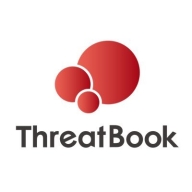

Tines and ThreatBook are key players in cybersecurity automation and threat intelligence sectors. Tines is preferred for its cost-effectiveness and broad integrations, while ThreatBook's real-time threat intelligence gives it an edge in detailed threat analysis.
Features: Tines offers automation capabilities that simplify workflows, integrates well with various tools, and improves efficiency. ThreatBook provides real-time data processing, detailed threat insight, and focuses on actionable intelligence.
Ease of Deployment and Customer Service: Tines ensures easy deployment with responsive support, enabling smooth implementation. ThreatBook is user-friendly with specialized support for threat intelligence optimization, facilitating seamless integration.
Pricing and ROI: Tines is attractive for its competitive setup costs and workflow efficiencies that enhance ROI. ThreatBook requires a higher initial investment but compensates with significant returns through comprehensive threat analysis.

ThreatBook is a cybersecurity platform that provides advanced threat intelligence to protect networks from evolving threats, utilizing real-time data analytics and comprehensive reporting to bolster defenses.
Designed for enterprises, ThreatBook equips IT teams with insights into the latest threats, integrating seamlessly with existing security infrastructures. It focuses on proactive threat detection and incident response, offering a deep understanding of threat landscapes. The platform is appreciated for its ability to deliver actionable intelligence, enhancing overall network security posture.
What are the key features of ThreatBook?In finance, ThreatBook implementation helps safeguard sensitive financial data, while in healthcare it protects patient information by preventing data breaches. It also supports manufacturing businesses by securing intellectual property from cyber espionage. Each industry benefits from features tailored to its specific threat landscape and priorities.
Tines automates manual security tasks, incident response workflows, and tool orchestration, enhancing efficiency by reducing repetitive processes and improving response times.
Users leverage Tines to automate complex security and incident response operations, integrating seamlessly with other platforms to streamline tasks. Its no-code automation capabilities and strong security features are particularly valued. While it enhances operational efficiency, users suggest improvements in customer support, documentation, and additional integration capabilities to overcome learning curve challenges. Some mention occasional latency issues and seek more customization, training resources, and clearer pricing structures. Enhanced scalability and detailed error logs are desired for smoother troubleshooting.
What are Tines' most important features?
What benefits and ROI should users look for?
In specific industries, Tines is implemented to automate security operations in sectors like finance, healthcare, and technology, where rapid incident response and integration with other platforms are crucial. Automating complex workflows without code is particularly beneficial in these fast-paced environments.
We monitor all Threat Intelligence Platforms reviews to prevent fraudulent reviews and keep review quality high. We do not post reviews by company employees or direct competitors. We validate each review for authenticity via cross-reference with LinkedIn, and personal follow-up with the reviewer when necessary.